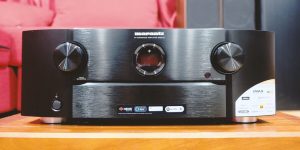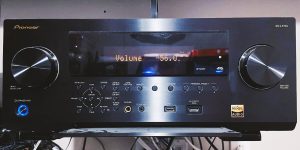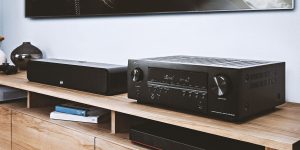The world of home theaters is evolving at a breakneck pace. The most significant recent shifts have been from HD to 4K and 3D to Atmos. 4K has become a buzzword that nearly every manufacturer uses to sell TVs.
What separates 4K from 1080p or HD is mainly the number of pixels on a screen: 4 times as many. And while some consumers can’t see much of a difference between 1080p and Ultra HD and are not sure if they need all those extra pixels, many others have recently upgraded their TVs or are about to buy one. So, is it necessary to upgrade also your receiver? Let’s take a closer look at the current situation.
Why does the picture on your 4K TV look bad?
Many people don’t realize that the quality of a picture depends on more factors than just the number of pixels or how big your TV is. The most important is an input signal (i.e., a movie or a TV program you watch). If you have a poor quality signal, the image may look bad regardless of your receiver or TV. So if you have invested in a 4K TV, the first step to get an optimal image is to ensure that you have a good source. That is a blu-ray or streaming service that delivers 4K content.
While you don’t have any of those, you should not be worried about the type of the receiver that is hooked to your TV.
Does a 4K receiver improve picture quality?
In addition to the pass-through feature (which simply means that 4K receivers pass the input 4K signal to the TV), newer models offer upscaling of DVDs and other legacy inputs to near 4K quality.
It means that if you have a DVD with 1080p or lower resolution, the receiver can process it and virtually “add” missing pixels to enhance the image quality. The result is still far from what you would get with a true 4K video source, but an upscaling feature is much better than nothing. Naturally enough, the actual improvement in quality will depend on how good your non-4K sources are. In many cases, weird pixelization issues may arise around the edges of objects on the screen.

Reasons to buy a 4K receiver and reasons not to buy
Assuming you have a 4K source or several of them in addition to your 4K TV, you definitely have reasons to consider getting a new receiver. Besides its capacity to send 4K signals from video devices to your TV while maintaining 4K resolution, you will additionally get:
- More HDMI inputs, which is critical if you have multiple 4K sources and want to switch between them using one remote control only. After all, having five or six HDMI inputs will allow you to hook up everything from cable, satellite TV box, game console, PC, and blu-ray player.
- Better surround sound quality. In particular, you get two additional channels of sound for Atmos and DTS:X formats (height speakers), which are gaining traction in the market due to the improved audio capabilities they offer. With the usual 5.1 and 7.1 set-ups, you don’t need height speakers.
- Better processing power. 4K content especially demands a lot from a receiver as it involves a lot more pixels on a screen and higher sound quality standards than 1080p video sources.
- HDCP 2.2 capability, which is a new standard of copy protection for 4K, Blu-ray, and streaming content. Without it, you won’t be able to watch some new releases on Ultra HD Blu-ray discs.
Are there cons to getting a new 4K receiver?
First and foremost, a 4K receiver costs a few hundred dollars. Second, a 4K receiver will become outdated pretty quickly. In 3-4 years from now, you will need a new one anyway as it’s going to lack features required for the latest video sources and TVs. But if you invested in a 4K TV now, it’s probably worth investing a little more in a device that will add features to your home theater set up so you can enjoy all your content with improved quality.
We are supported by our audience. When you purchase through links on our site, we may earn an affiliate commission at no extra cost to you.
Our newsletter
* We will never send you spam or share your email with third parties















